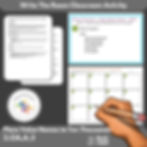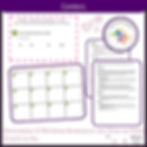Understanding the distinction between IEP goals and objectives is vital for special education teachers because it ensures that students receive a tailored roadmap for their unique educational journey. Without a clear grasp of these terms, it's easy to miss the mark, resulting in goals that lack clarity and objectives that fall short of supporting meaningful progress. Let's unpack these differences and discover how mastering them can streamline your IEP process and help students achieve their fullest potential.
Key Takeaways:
IEP Goals are broad targets that outline what a student will achieve over the course of the IEP term.
IEP Goal Objectives are specific, measurable steps that help students progress toward their overall goals.
Properly writing and understanding IEP goals and objectives is essential to providing effective, individualized support.
Breaking Down IEP Goals:
IEP goals serve as the guiding framework for a student's progress and are written to be specific, measurable, attainable, relevant, and time-bound (SMART). Here’s an example of an elementary-level math goal:
Goal: The student will solve addition problems up to 10 with 80% accuracy across five of six trials.
This goal is clear, concise, and measurable, providing a specific target and timeframe.
IEP Objectives: The Stepping Stones:
IEP objectives are the scaffold we build to support each student's steady progression toward their goals. They gradually release support as students’ skills advance toward mastery. For instance:
Objective 1: The student will solve addition problems up to five with 80% accuracy across three consecutive assessments.
Objective 2: The student will solve subtraction problems up to five with 75% accuracy across three consecutive assessments.
These objectives work together to build confidence and competence in math skills.
Diverse Examples Across Subjects and Grade Levels:
Here are more examples to help you develop comprehensive IEPs:
Middle School Reading Comprehension Goal (Fiction Texts):
Goal: The student will read a grade-level fiction text and answer comprehension questions (main idea, details, inference) with 85% accuracy in four out of five trials.
Objectives:
Objective 1: Identify the main idea of a grade-level fiction passage with 80% accuracy in three consecutive assessments.
Objective 2: Identify two supporting details with 80% accuracy across four of five trials.
High School Social Skills Goal (Group Collaboration):
Goal: The student will participate in group projects by contributing ideas, listening to others, and staying on task for 85% of the time.
Objectives:
Objective 1: Offer at least two relevant ideas during group discussions in four out of five projects.
Objective 2: Actively listen and provide constructive feedback during 85% of discussions.
Actionable Steps:
Review your IEP goals and objectives to ensure they follow the SMART framework.
Break down complex goals into manageable objectives to support gradual progress.
Use visual aids, graphic organizers, and templates to organize the goal writing process.
Common Challenges:
Overly Broad Goals: Avoid generalizations like "improve math skills." Be specific.
Vague Objectives: Make sure each objective builds logically towards the goal with clear, measurable targets.
Lack of Collaboration: Engage parents, specialists, and the student in the goal-setting process.
Join the Conversation:
Writing effective IEP goals and objectives can be challenging, but you don't have to tackle it alone. Join our community at TeachTastic, where educators like you share their successes and challenges in writing IEPs. Dive into our TeachTastic IEP Goal Bank to access thousands of prewritten goals, expert insights, and resources to streamline your IEP process. Let’s work together to make sure every student reaches their goals. Share your questions and strategies in the comments, and let's keep the conversation going!

































